1. In front of a window. Mirrors are a necessity for any morning routine, and mounting them in window casings is a great way to free up wall space. If your bathroom layout doesn’t lend itself to expansion, fitting in a larger shower or a freestanding tub and shower isn’t always possible. But opening up the room to a more creative layout like mounting the mirrors on a window wall frees up wall space to allow for a potentially better room configuration.
For example, If your vanity area and shower are on the same wall, you couldn’t expand the shower without shrinking the vanity. However, moving the vanity to a wall with windows might free up space to incorporate a larger shower area and still allow for keeping the vanity storage space.
Works best with: All styles.
Pros: This is a great solution for rooms with limited wall space. It also allows for a more ideal room layout. Plus, it’s a creative way to dress up the average window.
Cons: It’s hard to find mirror-mounting hardware, and your mirror size could be limited depending on your window size.
2. Suspended. What to do when there isn’t wall, much less a window wall, for mirrors? Consider suspending a mirror from a cable system. It’s great for saving space, and the look feels right at home in minimalist bathrooms.
Suspended mirrors are a solution typically used in small or oddly shaped bathrooms where putting the vanity against a wall isn’t an option. This is sometimes the case in apartments and condos inside old buildings that were converted into living spaces.
Works best with: Industrial, minimalist, contemporary and eclectic styles.
Pros: The ultimate no-wall-space solution, it allows for more floor plan options because the vanity is not limited to a wall. This mirror placement also gives the illusion of privacy in a large room and also allows for back-to-back plumbing configurations to maximize vanity space.
Cons: Mounting can be difficult and should be done by a professional to make sure the mirror and mounting hardware are both secure. Also, a custom-size mirror, which can be pricey, typically is needed for this application to maximize the space without taking up too much or too little of it. This solution can also give the illusion of less space in a small room.
3. Wraparound. The inverse of the suspended mirror solution is the wraparound. It’s a practical way to bring the illusion of space into a small bathroom along with more usable mirror space, and it’s a creative wallcovering.
These mirrors are usually custom-cut for each space to allow for the wall-to-wall look. They are secured directly to the drywall or other existing wallcovering. Reflective surfaces give the illusion of a brighter space and the semblance of depth. So they are a great solution for bathrooms that don’t have windows. It’s the ultimate trick for small or windowless bathrooms.
Works best with: Contemporary, modern, eclectic and transitional styles.
Pros: More reflection in a small bathroom makes the space seem brighter and have more depth.
Cons: This is an expensive custom option compared to other wallcoverings, and it’s hard to replace the mirror if it gets scratched.
4. Pivoting. Have you ever taken a step backward in your bathroom to get a more complete view of your outfit? In tight spaces that’s not always doable, unless you have a pivoting mirror.
These mirrors are also great for kids’ bathrooms, because the mirror tilt can be adjusted as they grow.
Another advantage to pivoting mirrors is the depth that the mirror hardware provides, not only from an aesthetic standpoint but also for the backsplash. If the mirror is mounted away from the wall, backsplash tile (or another solid-surface material) can be installed behind the mirror for an added visual element.
Works best with: Traditional and transitional styles.
Pros: The tilting action gives more viewing area in tight spaces, such as powder rooms and hallway bathrooms. The mirror hardware allows for a backsplash to come halfway up behind the mirror. For many homeowners, this can be a DIY-friendly installation.
Cons: Beware inexpensive models, whose hardware is not always sufficient to support the weight of the mirror, which can result in costly and dangerous damage.
To avoid this, when shopping for a pivoting mirror (especially when ordering sight unseen), make sure to read reviews and ask the manufacturer to ensure that the mounting hardware is sturdy enough to hold the mirror itself. Ask about return policies and warranties if you are still unsure. If you’re shopping in a store, make sure the hardware feels heavy and sturdy.
5. Layered. If you want to make a big statement, mount a mirror on top of a mirrored surface. It’s a very classy and creative way to dress up a wall. While it may be more expensive than other wallcoverings — such as drywall, wallpaper, or ceramic or porcelain tile — it can be less expensive or on par with the cost of natural stone or glass tile. By using a reflective surface instead of an absorbent surface (drywall, wallpaper, and the like), you allow for more light to be reflected, giving the illusion of more light overall.
Works best with: Traditional and eclectic styles.
Pros: Layering makes a decorative statement, and the added reflected light makes the room feel bigger and brighter.
Cons: This arrangement is sometimes hard to clean. Plus, installation can be tricky and costly.
6. Floor to ceiling. If you have reservations about mounting a mirror on top of a mirrored surface, skip the layered effect and use mirrors from floor to ceiling. There are many ways to create this effect, but a particular favorite is to use mirrored “tiles” (pieces of stock mirror cut into tile-size pieces for easier handling and a unique look).
Works best with: All styles
Pros: Floor-to-ceiling mirror tiles make a room feel deeper by giving the illusion of space. Together, they can also double as a full-length dressing mirror. Mirror tiles come in various colors and can create a stylish decorative feature.
Cons: Mirror tiles can be hard to clean, and they are expensive to buy and install. They are also hard to replace if they get scratched.
7. Built-in medicine cabinet. Need more storage but don’t have a lot of floor space? Built-in medicine cabinets with mirrors are a practical solution.
These are generally best built and installed by a cabinetmaker or skilled tradesperson. Custom solutions can offer the best use of space and can even include options such as outlets, charging ports, and fixed or adjustable shelving.
Many stock medicine cabinets can also be built in and installed by DIYers, but depending on the dimensions, the framing inside the wall might have to be relocated.
Works best with: Contemporary, modern, transitional, eclectic and transitional styles.
Pros: This is efficient storage that doesn’t impact room space, keeps countertops clutter-free and puts most-used items close to the sink. There are also options such as outlets and charging ports.
Cons: The material and installation are usually expensive.
8. Multiple mirrors. Installing multiple mirrors is a great way to dress up an ordinary bathroom, and to show off family heirlooms or amazing antique finds.
Mirrors can have a large impact on a room without the permanence of tile or faucets. A great situation for using multiple mirrors would be if you are concerned about resale (whether in the short or long term), and you want to personalize the space without putting in more permanent personal touches such as special or fancy tile.
Just make sure you secure your mirrors really well, preferably into studs. If studs aren’t available, make sure the anchors used in the wall can support the weight of the mirror (drywall doesn’t have the integrity to hold a lot of weight, especially over time). If needed, call a contractor to hang your mirrors to make sure they are safe and sound.
Works best with: Eclectic and farmhouse styles.
Pros: This is a decorative, fun way to display artistic or antique mirrors, and it can be a DIY installation.
Cons: It’s not a practical way to get a full view, and the mirrors are potentially harder to clean, depending on the styles.


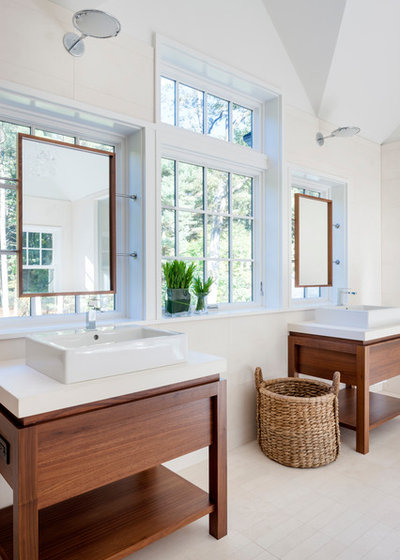
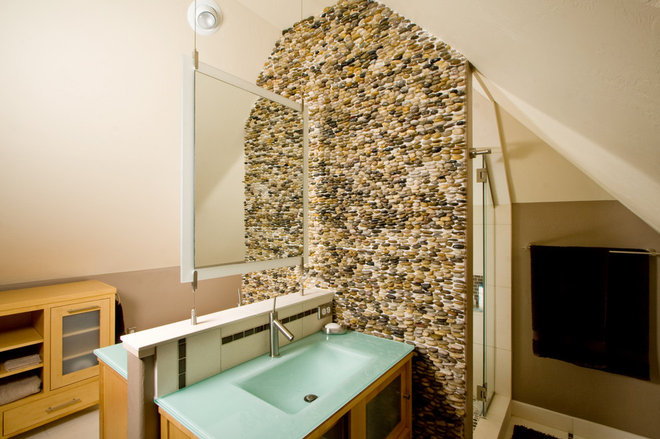

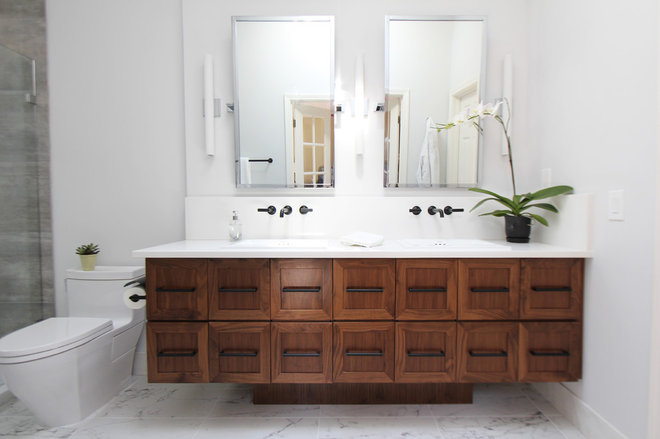
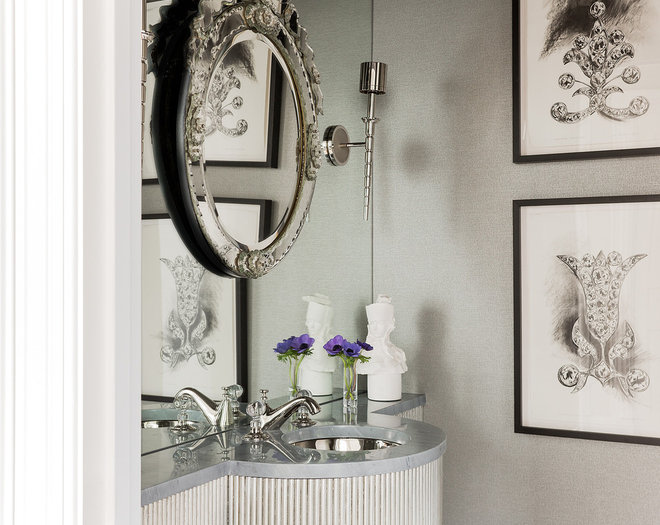
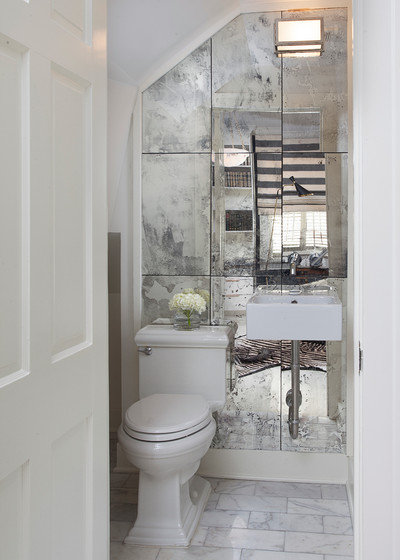
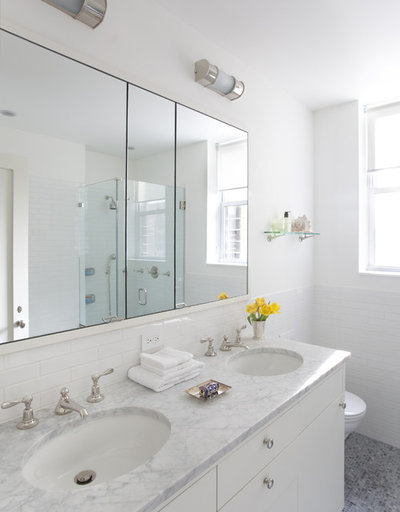
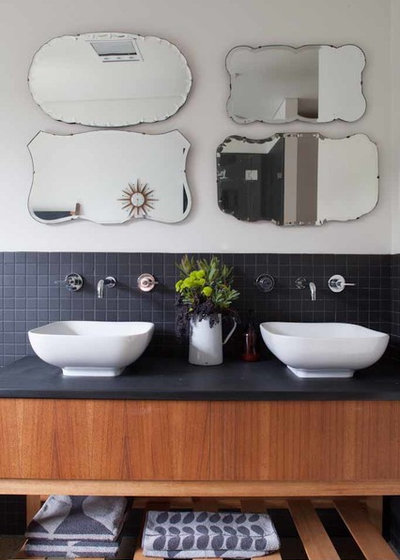






I actually hadn’t thought about mirrors in front of windows – that would open up more layouts in our bathroom remodel.
I don’t know why but I don’t like the back to back mirror option – just seems weird! But my bathroom is not laid out that way so I guess people only do it out of necessity. I’ve never actually seen a bathroom floor plan that needed it though.
I’m renovating a small bathroom and I’m looking for more pictures of small bathroom mirror options.
I installed medicine cabinet mirrors in my bathroom and it’s really practical and the task lighting is really bright.
I love layered mirrors so elegant
Love these bathroom mirror ideas thanks for sharing
I like that you included the cons
great bathroom inspiration photos
What about the backlit mirror options?
All are good mirror ideas just depends on what kind of bathroom layout you have
I don’t like any of these bathroom mirror ideas